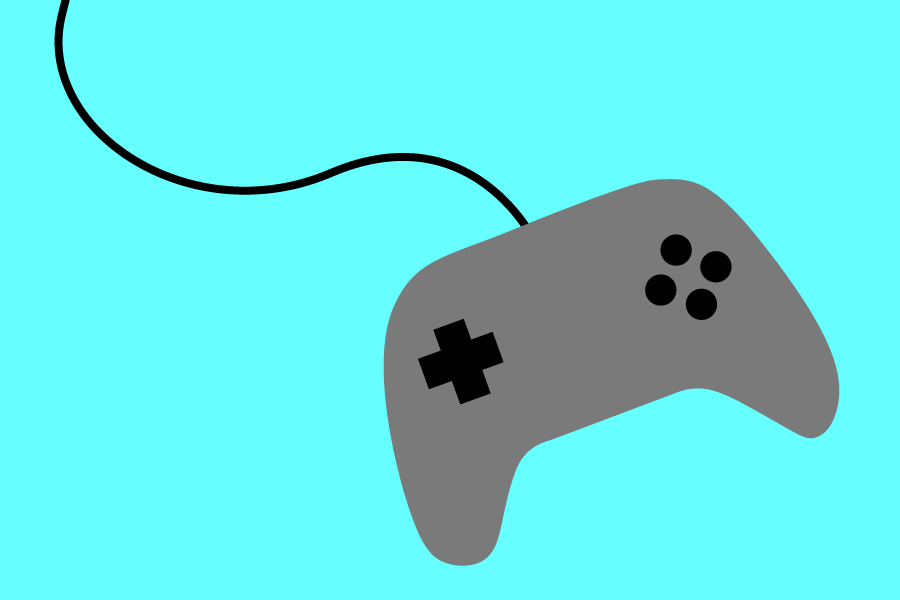
A quickly growing industry
Video games have come a long way from the simple Bertie the Brain game. With regard to all technological advances in gaming, the greatest and most notable improvement is accessibility. With a smart phone and access to the internet, video games are only moments away.
Nevertheless, the recent increase in handheld gaming can’t compete with the behemoth of internet gaming. Games like “World of Warcraft” flexed over 12 million monthly subscribers in 2010, while recently games like “PlayerUnknown’s Battleground” sold over 40 million copies. (This pales in comparison to “Tetris,” with an overall 170 million copies.) Even those numbers can’t fully account for the success of free-to-play games. “League of Legends” boasted 27 million daily players in 2014, not to mention records smashed by “Fortnite.”
Jorge Peña, an associate professor in the Department of Communication at UC Davis, explained that, while there is a competitive gaming scene, for it to fully flourish the industry needs to hurdle certain growing pains in regard to how gaming is received.
“Unfortunately, the light that is cast on the medium sometimes will focus on the negative effects of the technology, which is quite understandable,” Peña said. “There is plenty of research showing that when new technologies emerge most people are interested in learning how that technology might be harmful […] All I’m saying is that, naturally, people tend to gravitate to ask what’s wrong with this picture rather than what’s right with it.”
Peña explained there can be things learned from video games, but this might not be seen as traditional learning.
“There’s plenty of evidence that games are good for learning in the sense of not big learning but shallow learning. By that I mean motor skills: eye-hand coordination,” Peña said. “But there is also some evidence that certain games are good for deep learning. Particularly simulation games, things like ‘SimCity,’ for example, that allow people to understand complex public systems and causes and consequences of different behaviors.”
Analogous to the film industry, each great game has a lifespan. After a certain amount of time, players will move on to the next big hit video game. Peña defended this pattern as the industry’s way of growing and bettering itself.
For example, “Doom” was widely considered the father of first-person shooter games. Although fewer people play the game today, many of the game’s mechanics live on in other games.
“Think about game mechanics, like for example in shooter games,” Peña said. “They have evolved over the years, but they still play like a shooter game […] That form of playing the game has been around for some time now, for maybe 20 to 30 years. I think over time some of the ways of playing video games or game mechanics become normalized.”
As for the industry as a whole, Peña has high hopes. He mentioned certain schools committed to its growth.
“Recently, UC Irvine started sponsoring a ‘League of Legends’ professional team that represents UCI,” Peña said. “So there’s definitely been a shift even to universities being into esports.”
Video games have been around for a short time, yet seem to be here to stay. The industry is expanding, and so is the player base. What may become America’s next great pastime is as of now a good way of bringing people together.
“You can definitely get lost in great games, if they’re single player games,” said NIck Wang, a second-year economics major. “But at the same time, experiences are also really fun when you have someone to actually share them with. I’d say overall I prefer games that I can play with friends.”
In order to capture the fascination that enthralls millions around the world, it seems important to track games back to stage one: their creation.
Bayan Mashat, a fourth-year computer science major and co-president of Davis’ Game Development and Arts Club, shared her experience in game design.
“If you are a game maker, you should make the game you want to play,” Mashat said. “If you want to play a fighting game, make a fighting game.”
Regarding the craft itself, Mashat approaches it like art.
“I had a call from someone working at a museum,” Mashat said. “They asked me ‘Are you an artist?’ […] It depends on your definition of ‘artist.’ I design games and I certainly believe that it’s a form of art.”
When all is said and done, what Mashat finds most rewarding is when people play her game.
“When people play the game, even a small portion of the game, that’s very rewarding,” Mashat said. “Making games are hard and challenging, sometimes it gets boring. Because you want to make something, but it takes time […] It’s not a simple road. So when you finish something, even if it’s really small, even having someone play it and to see their reaction is like ‘Oh yeah, I did something. I did something that’s fun.’”
Games can be classified as more casual ways to spend time or as ways to vent competitive drive. Wang spoke about his experience in this regard.
“[I’ve played] probably since I was 7, so 12 years,” Wang said. “It depends on the occasion, but nine out of 10 times it is for fun, but there definitely have been times where it did feel competitive. Especially when you’re playing with friends, it can get much more competitive.”
While Wang may have been focused on good times spent with his friends, a professional competitive scene for video games has been and is developing. For scope, The International 2017: DOTA 2 Championships had a $24 million prize pool.
But boiled down, disregarding all the large numbers of sales and players, gaming is fundamentally based on simple human connections.
Written by: Nicolas Rago — arts@theaggie.org



